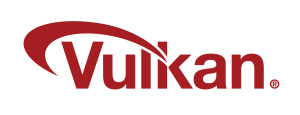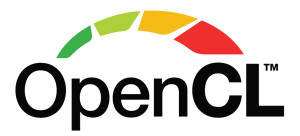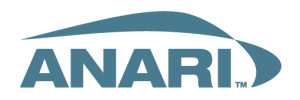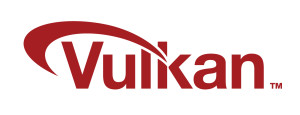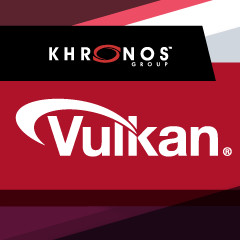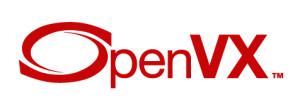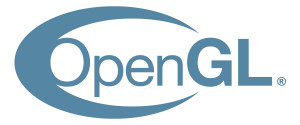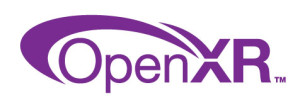Sascha Willems has reworked filtering for his Vulkan Hardware Database. A new settings page allows for more control over global filters applied to the data, hopefully making it easier to limit results to what people are actually looking for.
News Archives
A Position-Based Particle Orientation Dynamics Algorithm Implemented in OpenCL for Houdini
Giacomo Balma, Sr. FX Technical Artist at MPC, has created a position-based particle orientation dynamics algorithm that computes the orientation of a particle by considering the change in position of its local neighbors. It is fully implemented in OpenCL for Houdini SideFX Software DOPs and adds very little overhead to the simulation. Learn more and watch a video of it in action.
Kitware Introduces ANARI Capability Analysis Tool
Kitware’s Capability Analysis Tool (CAT) is designed to identify performance bottlenecks and limitations. This tool addresses critical questions that arise during development, such as:
- Animated Vertices: How does the renderer perform when dealing with vertices that are animated (changing positions over time)?
- Material Switching: Is the renderer capable of rapidly switching between different materials assigned to objects
- Surface Limits: What is the max number of surfaces the renderer can handle before experiencing a significant drop in framerate?
- Structural Changes: Can the renderer efficiently handle frequent updates to the objects within the scene?
- Instance Rendering: How many instances of a given object can the renderer efficiently process?
- Latency Stability: Does the renderer maintain stable latency under various workloads and scene complexities?
By generating procedural scenes and systematically varying parameters related to these questions, the CAT provides implementers insights into the performance characteristics and limitations of their ANARI implementations. This information can be used to optimize the renderer, identify areas for improvement, and ensure that the renderer meets the desired performance targets. This tool has been contributed to the ANARI SDK.
NVIDIA Vulkan Beta Driver Introduces BFloat 16 Support
NVIDIA recently published beta drivers that introduce the recently released VK_KHR_shader_bfloat16 extension in Vulkan 1.4.311 build. This extension allows for Brain Float BF16 operations within shaders in conjunction with the SPV_KHR_bfloat16 extension from SPIR-V. BFloat16 extensions should prove particularly useful for modern GPUs and software supporting Vulkan-accelerated machine learning / AI.
Khronos Group Welcomes Hololight as Contributor Member
The new era of spatial computing has arrived! At Hololight, we believe that augmented and virtual reality (XR) will change the way we work and collaborate for the better. We provide the XR software, infrastructure and streaming technology to visualize and work with industrial 3D data at scale. In doing so, we are revolutionizing the way companies engage with 3D content and scaling the use of XR. We have spent years perfecting our proprietary streaming technology to take XR use cases to unprecedented levels of scalability, efficiency, and immersion. With a foundation built on strategic partnerships, industry-leading customer references, and unparalleled expertise in XR streaming and spatial computing, we are committed to leading the way in creating real value for enterprise XR.
Datoviz: Ultra-Fast, High-Performance GPU Scientific Visualization Library Built on Vulkan
In this Khronos blog, learn about Datoviz, a cross-platform, open-source, high-performance GPU scientific data visualization library designed for interactive exploration of large datasets. Written in C/C++, it leverages the Khronos Vulkan® graphics API and integrates with the glfw window library. Datoviz aims to provide a unified, language-agnostic platform for interactive visualization in both 2D and 3D, with support for GUIs and general-purpose GPU compute. Datoviz demonstrates how Vulkan’s capabilities can be leveraged for high-performance GPU visualization, tackling the challenges of large-scale scientific data rendering while maintaining flexibility and efficiency.
LunarG Releases Vulkan SDK 1.4.309.0
LunarG has released Vulkan SDK 1.4.309.0 for Linux, Windows, and MacOS. Supporting Vulkan API revision 1.4.309, this SDK update brings a host of enhancements designed to streamline your graphics development workflow. Whether you’re debugging shaders, optimizing performance, or exploring new extensions, this SDK has something for you.
Key enhancements in this version include:
- Vulkan Validation Layer error messages get a major upgrade—now clearer, more actionable, and easier to digest due to a standardized format.
- The Vulkan Configurator levels up with slick new features, aimed at improving developer productivity.
- Ten new extensions join the lineup, expanding your creative toolkit.
- Validation coverage sees a boost, helping you catch more issues with less hassle.
Khronos Group Welcomes Tsinghua University as Academic Member
Tsinghua is one of the most prestigious universities in China. Through teaching, research and innovation, Tsinghua University is committed to the advancement and well-being of the nation and the world.
Datoviz: Ultra-Fast, High-Performance GPU Scientific Visualization Library Built on Vulkan
Datoviz is a cross-platform, open-source, high-performance GPU scientific data visualization library designed for interactive exploration of large datasets. Written in C/C++, it leverages the Khronos Vulkan® graphics API and integrates with the glfw window library. Datoviz aims to provide a unified, language-agnostic platform for interactive visualization in both 2D and 3D, with support for GUIs and general-purpose GPU compute.
Data-Parallel Rendering with ANARI
A team of experts from IT4Innovations, NVIDIA, the University of Cologne, and the University of California has developed a new approach to rendering scientific visualisations that uses the ANARI API for parallel processing of large sci-vis data. This approach allows computations to be distributed across multiple devices, speeding up and simplifying the entire rendering process.
Framing the Future of Image and Sensor Processing with OpenVX
The OpenVX Working Group releases new extensions plus roadmap guidance to help developers ensure compliance with safety standards, process synchronized metadata more efficiently, and provide insights into future OpenVX enhancements that will make it more powerful, flexible, and easier to implement.
Collabora Blog: Goodbye Nouveau GL. Hello Zink!
Starting with Mesa 25.1, Nouveau users will no longer get the old Nouveau OpenGL driver by default and will instead get Zink+NVK. Unlike most OpenGL drivers which are written to target the underlying hardware directly, Zink is an OpenGL implementation written on top of Vulkan. Collabora has been talking about this for a while, but the MR has landed today.
Meta and OpenXR
In this Meta blog, Meta addresses their commitment to OpenXR and announce that with the v74 SDK, available next week, the built-in OpenXR path for all major game engines will be a recommended path for development. Developers building on Unity, Unreal and Godot can leverage OpenXR to build across platforms and access Meta platform plugins to add features unique to Horizon OS. Dive in to learn more about OpenXR paths for each engine.
NVIDIA RTX Mega Geometry Now Available with New Vulkan Samples
To render high quality assets with higher instance counts and greater triangle density, NVIDIA introduced RTX Mega Geometry. RTX Mega Geometry is available today through NVIDIA RTX Kit, a suite of rendering technologies to ray trace games with AI, render scenes with immense geometry, and create game characters with photorealistic visuals. As part of this release, new Vulkan samples have been made available to all developers. These open-source samples show how you can use clusters of triangles to build acceleration structures faster, render massive amounts of animated geometry, path trace models with streaming level of detail (LoD), and more. NVIDIA is also releasing two libraries to help process geometry into clusters.
NVIDIA Posts Vulkan RTX Neural Shader Samples
NVIDIA RTX Neural Shaders bring small neural networks into programmable shaders. This technology framework enables the training and deployment of neural networks directly within shaders, enabling you to compress game data and shader code and approximate film-quality materials, volumes, geometry, and more in real time. While DirectX Support is not available yet for neural shading applications, Vulkan support is available today.
Loading...
End of content
No more pages to load
